Careers at CDC
CDC Social and Behavioral Scientists
Meet CDC′s multi-faceted group of social and behavioral scientists. These individuals possess diverse backgrounds in psychology, sociology, anthropology, health communications, geography, social work and demography.
Where They Work
Some 554 CDC employees belong to CDC′s Behavioral and Social Science Working Group (BSSWG), which focuses on furthering understanding and use of social and behavioral science at CDC. According to Janet Heitgerd, chair of BSSWG′s Executive Committee, "Behavioral and social scientists are found in all Centers and many Coordinating Centers. The National Center for HIV, STD, and TB Prevention (NCHSTP) has the largest number of these scientists, while the National Center for Injury Prevention and Control (NCIPC) has the largest percentage."
In general, behavioral and social scientists are involved in a range of activities, including designing, analyzing and evaluating behavioral surveillance systems, public health interventions, and health promotion and health communication programs using a variety of both quantitative and qualitative methods.
Just to Name a Few . . .
David R. Brown, PhD, Senior Behavioral Scientist
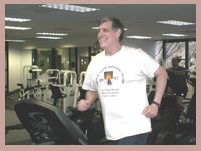
Division of Nutrition & Physical Activity, NCCDPHP
Coming of age during the Vietnam War years and during the civil rights movement, David Brown chose the social and behavioral science field to make a contribution to society.
With advanced degrees in kinesiology and educational psychology, Brown served the world of education and research first before joining CDC in 1992. As a behavioral scientist with the Physical Activity and Health Branch, Brown conducts research, monitors cooperative agreements, and provides technical assistance related to physical activity and mental and physical health outcomes.
His advice to those considering pursuing a career in social and behavioral science? "Because of the complex nature of lifestyle behaviors and their interaction with health and contemporary diseases, it is important be able and willing to work as one member of a multi-disciplinary team to address health concerns."
Janet Heitgerd, PhD, Behavioral Scientist
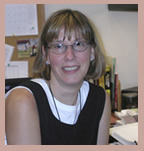
Geospatial Research, Analysis and Services Program
Division of Health Studies, ATSDR
The best part of Janet Heitgerd′s job is "working as part of a multi-disciplinary team." As a behavioral scientist in the Geospatial Research, Analysis and Services Program, Heitgerd and her colleagues in environmental health science, epidemiology, demography, geography and medicine are on the forefront of using Geographic Information Systems (GIS) in public health applications.
"The most challenging aspect of my job is probably the data–obtaining the most robust data for the locations of interest at the appropriate scale and resolution," says Heitgerd, an avid reader who earned her PhD in Sociology and joined the Agency for Toxic Substances and Disease Registry (ATSDR) in 1991. She currently serves as chair of CDC′s Behavioral and Social Science Working Group Executive Committee.
Mark Faul, PhD, Behavioral Scientist
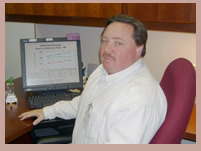
Division of Injury Response, NCIPC
In his job assessing injury data from both extramural research programs and surveillance systems, Mark Faul approaches the problems of improving public health a bit differently than other scientists and epidemiologists. "It is okay to be different. Skill diversity at CDC has been welcomed," he says.
Deployed on two hurricane responses, he has learned that it is critical to include human behavior in assessing injury, since they are the leading cause of death in people from birth to age 44.
Faul has both a MS in psychology and PhD in public policy analysis. "I think the key to working in this field is education and being assertive about approaching problems more broadly," he says. In this field we have to think about how the parts of the public health process interact.
Michelle D. Owens, PhD, Behavioral Scientist Division of Diabetes Translation, NCCDPHP
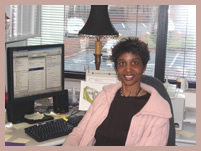
A passion for women′s health issues and family dynamics were factors that attracted Michelle Owens to CDC in 2001 to work as a senior service fellow on a collaborative study developed by CDC′s Division of Diabetes Translation (DDT) and the University of Georgia.
Her current job in DDT includes serving as the team leader for the National Public Health Initiative on Diabetes and Women′s Health, and as a team member on the National Diabetes Education Program.
"A challenge in this work is that everything is appealing, yet it is not feasible to be involved in all tasks," says Owens, who advises those wishing to pursue social and behavioral science to find a niche to call their own.
Matthew Hogben, PhD, Behavioral Scientist
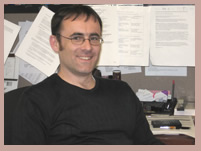
Division of STD Prevention, NCHHSTP
Answering the age-old question of "Why people behave as they do?" prompted Matthew Hogben as a high school student in Michigan to pursue social sciences and psychology in college. His interest in public health came later, when he participated in an Association of Teachers of Preventive Medicine Fellowship that included a three-month rotation at CDC in early 1999.
While Hogben acknowledges that there are still a few who don′t view the social sciences as "real science," or not as difficult as other sciences, there is still plenty of scope to apply social science principles to many public health topics.
"In many respects the resources for research, evaluation, writing, and policy generation are greater at CDC than in academia or even in private social research organizations," he says.
Mary Spink Neumann, PhD, Behavioral Scientist
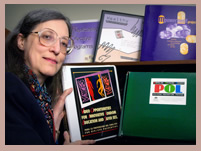
Division of HIV/AIDS Prevention, NCHHSTP
An anthropologist by training, Mary Neumann joined CDC in 1987 as a public health advisor based in Indianapolis. At the time, CDC had no branches devoted to behavioral research.
Today, she works primarily on the Replicating Effective Programs (REP) project in the Division of HIV/AIDS Prevention. The programs in REP are tested, science-based behavioral interventions that have been shown to work in the real world to reduce risky behaviors, such as unprotected sex.
A former Senior Fulbright Research Scholar, Neumann has three degrees in anthropology, including an MA from the Universidad de las Américas in Mexico and a PhD from Pennsylvania State University, where she also taught as an instructor. She is a former Executive Chair of CDC′s BSSWG.
Neumann′s advice to those interested in going into behavioral science is to "absorb all that you can in your education and experiences to increase your job flexibility, and learn to write clearly and simply with correct grammar, spelling, and punctuation."
Get email updates
To receive email updates about this page, enter your email address:
Contact Us:
- Centers for Disease Control and Prevention
1600 Clifton Rd
Atlanta, GA 30333 - 800-CDC-INFO
(800-232-4636)
TTY: (888) 232-6348
24 Hours/Every Day - cdcinfo@cdc.gov

